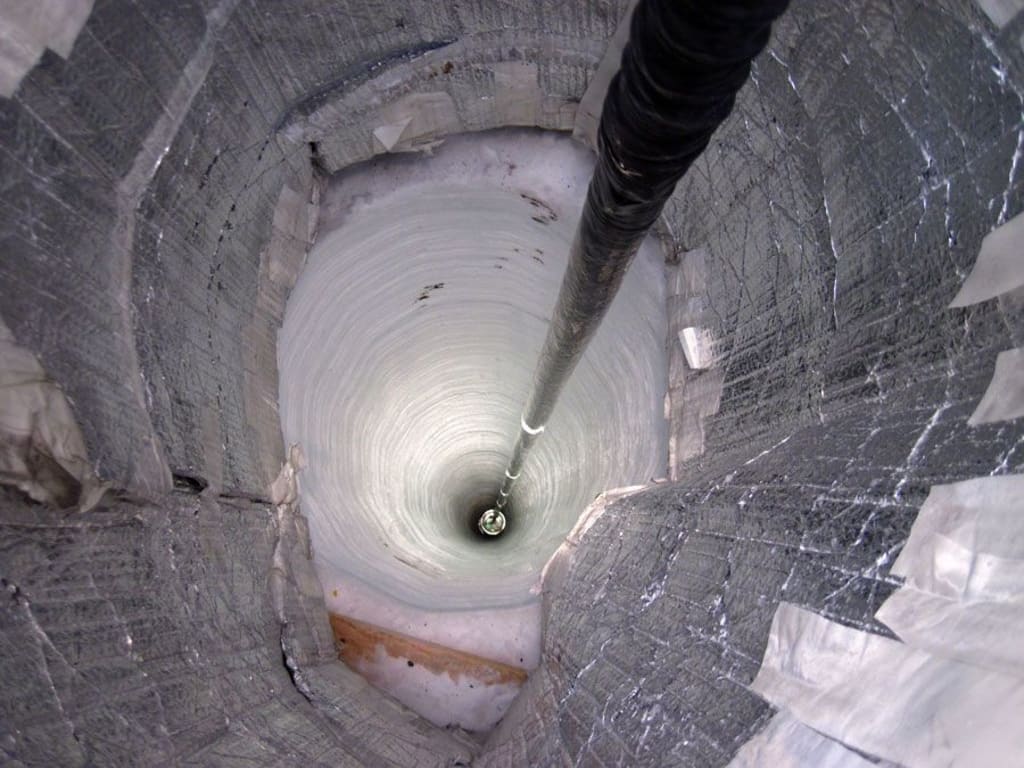How Deep Can We Dig?
Unveiling Earth's Depths: A Journey Through Layers of Exploration and Ambition

At some point in their lives, nearly everyone has harbored the desire to excavate a tunnel all the way to the Earth's core.
Nonetheless, this aspiration has remained unfulfilled, as no one has managed to bore a hole to such incredible depths. This inquiry serves as the focal point of this presentation:
What extent could we feasibly achieve in terms of digging into the Earth's depths using contemporary technology?
Let's hypothetically commence our dig from a location on the Earth's surface, commencing modestly at a depth of 1.8 meters - equivalent to the customary burial depth in Western tradition, where one's fears of encountering zombies may arise.
Descend further, and at 4 meters, you'd reach the depth where the tomb of Pharaoh Tutankhamun was unearthed.
Digging down to 6 meters, you would have reached the maximum depth where metal detectors can successfully detect signals.
Venturing to 12 meters below the surface, you'd uncover the deepest burrows ever constructed by animals - exemplified by the Nile crocodile.
Pushing on to 20 meters, you'd arrive at the depth of the Paris Catacombs beneath the city of Paris, a repository for the remains of more than 6 million individuals.
Double the depth to 40 meters, and you'd encounter the world's deepest swimming pool, which, if drained, would demand nearly 3 seconds to free-fall from the top to the bottom.
At 100 meters, you would delve into the depth often employed by governments for burying nuclear waste.
A little lower, at 105.5 meters, lies the globe's deepest metro station, situated in Kiev.
Continuing the descent to 122 meters, you'd find the deepest point to which a plant's roots have delved - exemplified by a fig tree in South Africa.
Descending further, at 220 meters, the Congo River in Africa reveals itself as the world's deepest river.
Progressing to 240 meters, you could traverse the deepest railway tunnel globally, interlinking Japan's Honshu and Hokkaido islands.
However, at 287 meters, vulnerability to the B82 Earth-penetrating nuclear warhead would persist, given its destructive capability to reach this depth below the surface.
Remarkably, at 392 meters, you'd reach the deepest well and potentially the most profound hand-dug hole in history - the Woodingdean Water Well in the UK, excavated way back in 1862.
Plunge to 603 meters, and you'd encounter the most spine-chilling scenario: the deepest vertical cave drop. A fall down this hole would eclipse the height of descending from the top of New York's One World Trade Center, necessitating more than 11 seconds for the plummet.
Deeper still, at 700 meters, lies the location where the Chilean miners endured a 69-day entrapment in 2010.
Descend to 970 meters, and you'd arrive at the Bingham Canyon open pit mine in Utah, the deepest excavated point with an open sky overhead. This chasm is so cavernous that you could place the tallest building globally within it and still boast over 100 meters to the surface.
Venturing to 1,410 meters, you'd encounter the site of the deepest-ever concert, hosted by the band 'Agonizer' in Finland.
At 1,642 meters, you'd reach the depth of the Earth's deepest lake - Lake Baikal in Russia.
Delve to 1,857 meters, and you'd touch the lowest point of the Grand Canyon.
Identified at 2,197 meters beneath the surface in Georgia, the Earth's deepest known cave beckons.
Nevertheless, the absolute deepest point one could fall into extends far beyond this - all the way to 3,132 meters, constituting the bottom of South Africa's Moab Khotsong mineshaft. The elevator journey to the base of this abyss consumes a substantial 4 1/2 minutes, while a free-fall would demand 25 seconds, sufficient for introspection comparable to an entire missed phone call.
Extending further, at 3,600 meters, you'd encounter the deepest point where a multicellular organism has managed to subsist - an eerie-looking worm.
Surpassing even this, human beings have ventured deeper. At 4,000 meters, you'd touch the nadir of the Earth's deepest mine, situated in South Africa, an expedition that consumes more than an hour and exposes miners to temperatures soaring to 66 degrees Celsius.
At 6,000 meters, you'd reach the average depth of the oceanic crust beneath the ocean floor.
Plunge dramatically to 8,848 meters, akin to the depth of Mount Everest if it were nestled underground.
Progressing to 10,994 meters, you'd hit the floor of the Marianas Trench - Earth's profoundest oceanic point. Notably, this sea-depth was previously discussed in another presentation.
Yet astonishingly, human endeavors have probed depths even more substantial. At 12,262 meters, you'd encounter the Kola Superdeep Borehole's depth, a Soviet endeavor to bore through the Earth's crust. However, they halted merely a third of the way due to the scorching temperature at this level - a searing 180 degrees Celsius.
The borehole, a mere 23 centimeters in width, thankfully isn't susceptible to accidental falls. For reference, a quarter dropped into it would require approximately 50 seconds to reach the bottom.
Recent times have witnessed the Z44-Chavyo oil and gas well outdoing this depth, reaching 12,376 meters - equivalent to stacking 15 Burj Khalifas, and currently holds the record as humanity's deepest excavation.
However, the Earth's crust can extend as far as 70,000 meters below the surface, while the planetary core lies at a staggering 6,731 kilometers beneath. To put it in perspective, if Lisbon, Portugal represented the Earth's surface and Astana, Kazakhstan embodied the planetary center, humanity's exploratory reach so far would be but a minuscule endeavor.





Comments
There are no comments for this story
Be the first to respond and start the conversation.